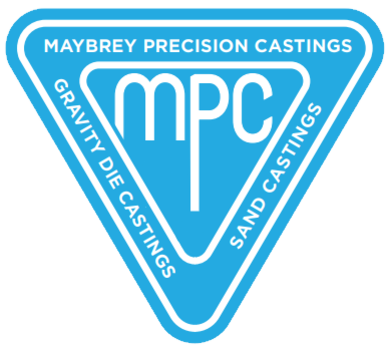What is Aluminium Gravity Die Casting?
Posted on 15th November 2023 at 15:09
Aluminium gravity die casting is a permanent mould-casting process. In this process, molten metal is poured into the mould using gravity, allowing it to fill the cavity and create the desired shape.
One of the unique features of aluminium gravity die casting is the ability to incorporate undercuts and cavities using sand cores. This makes it a versatile and efficient method for manufacturing complex parts with intricate designs.
Compared to other casting processes, gravity die casting offers several advantages. The rapid solidification of the molten metal in the mould results in a better surface finish and improved mechanical properties of the castings. Additionally, aluminium gravity die casting has a higher casting rate than sand casting, making it suitable for mass production. However, it is essential to note that using metal moulds in gravity die casting can be more expensive than sand moulds.
Process of Aluminium Gravity Die Casting
The aluminium gravity die-casting process involves several steps. The die or mould is first prepared by coating it with a refractory material to prevent the molten metal from sticking to the surface. The die is then heated to a specific temperature to enhance the flow of molten metal and improve the casting quality.
Next, the molten aluminium alloy is poured into the mould using gravity. The force of gravity ensures that the molten metal fills the mould cavity, producing accurate and detailed castings. After the molten metal solidifies and cools, the die is opened to remove the cast parts.
Once the cast parts are removed, any scrap or excess material is trimmed and removed from the casting. The parts are then processed and cleaned to achieve the desired finish and dimensions before being dispatched for further use or assembly.
It is worth mentioning that aluminium gravity die casting can be performed manually, where the molten metal is poured by hand or with automated ladles for high-volume production.
The choice between manual and automated casting depends on the specific requirements and production volume.
Advantages of Aluminium Gravity Die Casting
Aluminium gravity die casting offers several advantages over other casting processes. One of the key advantages is the low gas porosity and fine grain sizes achieved in the castings. This results in components with improved structural integrity and reduced defects.
Compared to sand casting, gravity die casting requires less finishing and fettling. The process produces castings with better surface finish and dimensional accuracy, reducing the need for extensive post-processing. Additionally, the rapid solidification of the molten metal in the mould contributes to better mechanical properties of the castings.
Another advantage of aluminium gravity die casting is the ability to incorporate undercuts and cavities using sand cores. This allows for producing more complex parts with intricate designs, expanding the range of gravity applications die casting.
In terms of casting rate, aluminium gravity die casting outperforms sand casting. The gravity-induced flow of the molten metal ensures a faster filling of the mould cavity, making it suitable for mass production of simpler parts.
Differences Between Aluminium Gravity Die Casting and Sand Casting
While both aluminium gravity die casting and sand casting are casting processes, there are significant differences. In aluminium gravity die casting, sand cores create undercuts and cavities in the castings. This allows for the production of complex parts with internal features.
On the other hand, sand casting relies solely on sand moulds to create the desired shape.
The castings' surface finish and mechanical properties are generally better in aluminium gravity die casting compared to sand casting. The rapid solidification in gravity die casting contributes to a finer grain structure and improved mechanical properties.
However, it is essential to note that using metal moulds in gravity die casting can be more expensive than sand moulds. The higher cost of metal moulds is a consideration when choosing between the two casting processes.
Applications of Aluminium Gravity Die Casting
Aluminium gravity die casting finds wide applications in various industries. It is commonly used in automotive manufacturing for producing components such as engine blocks, transmission cases, and suspension parts. The lighting industry also employs the process for manufacturing light fixtures and housings. Additionally, aluminium gravity die casting is used to produce kitchen components, including cookware handles and knobs.
Aluminium gravity die casting is particularly suitable for mass production of simpler parts and components. However, it may not be recommended for large volumes of complex parts where other casting methods might be more appropriate.
Importance of Material and Quality in Aluminium Gravity Die Casting
The choice of material is crucial in aluminium gravity die casting. A commonly used aluminium alloy for gravity die casting is A356-T6, known for its good casting and machining performance. The T6 heat treatment can further enhance the mechanical properties of A356 castings.
Achieving good tolerances and surface finish is essential in aluminium gravity die casting.
Careful attention to the casting process parameters, such as temperature and cooling rate, ensures the desired quality of the castings.
Maintaining quality throughout the gravity die-casting process is of utmost importance. This includes proper maintenance of the moulds, control over the melting and pouring processes, and adherence to quality control measures during post-processing operations. The final castings will meet the required specifications and performance criteria by ensuring high-quality standards.
Aluminium gravity die casting is a permanent mould-casting process that offers several advantages over other casting methods. It provides a better surface finish, higher casting rate, and improved mechanical properties than sand casting. Incorporating undercuts and cavities using sand cores makes it suitable for producing complex parts.
Aluminium gravity die casting finds applications in automotive, lighting, and kitchen manufacturing industries, particularly for mass production of simpler parts. Selecting the appropriate aluminium alloy and maintaining quality throughout the casting process is essential for achieving successful results in aluminium gravity die casting.
Contact Maybrey Reliance to learn more.
Share this post:




